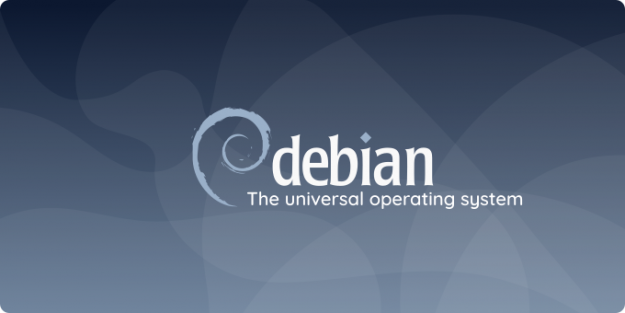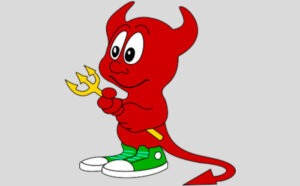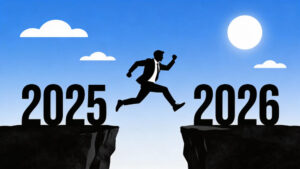The last decade or so has seen Debian largely repositioned as an upstream distribution, making it an essential component of the desktop Linux infrastructure. Does your distro have “Debian Inside”?

If you don’t follow the fortunes of Linux distributions, you might think that the days of Debian’s dominance are long since gone. However, superficial appearances can be deceiving. Not only does Debian consistently appear in the top ten of Distrowatch’s page hit ranking, it’s used as the base of the majority of other distributions as well, far eclipsing rivals like Fedora and Red Hat or openSuse. In fact, Debian might be said to be the most influential distro ever.
That may seem an overstatement, but the figures are hard to argue with. For at least eight years, Debian has been by far the most dominant distribution. Some details of its dominance have changed, but the overall pattern has been constant. Without Debian, modern Linux would be vastly different.
The Figures
I first noticed Debian’s position eight years ago. In 2011, the top ten distributions for page hits on Distrowatch included Debian, Ubuntu, and Linux Mint. Together, they accounted for 6,212 page hits, compared with 6,657 for the other top seven. Or, to put things another way, according to Distrowatch’s search page, of 323 active distributions on Distrowatch, 128 were based on Debian, and another 74 on Ubuntu. Only 50 distros were based on Fedora or Red Hat Enterprise Linux, and 28 on Slackware. In other words, either directly or indirectly, Debian accounted for 62% of all active distributions.
Today, Debian is even more dominant. Of the top ten distributions on Distrowatch, seven are Debian or derived from it: MX Linux, Mint, Debian, Ubuntu, elementary, and Zorin. All these distributions account for 11,927 page hits, compared to 4807 for Manjaro, Solus, and Fedora, which round off the top ten. There are a few interesting changes, such as the newish MX Linux holding the top spot, and Ubuntu in fifth position just behind Debian after so many years of heading the Top 10. However, the biggest change is the disappearance of so many long-established distros. Even Fedora barely squeaks into tenth position.
Similarly, the origin of distributions still tends towards Debian. Only 288 distributions are listed today, but 128 are Debian-based, while Ubuntu-based distros have slipped to 54. Among non-Debian distributions, Fedora / Red Hat is the source of only 14 today, and Slackware of 8. As a percentage, Debian and its distributions have held steady, despite Ubuntu’s decline, which is probably due to the reduced emphasis on development at Canonical in recent years. What is most surprising is the decline in the use of other distributions to produce new ones.
Despite Distrowatch’s efforts, the site does not include every distribution. Also, page hits on a single site is not the most accurate sign of popularity. If the numbers were closer together, the results might be questioned. But the difference is large enough to accommodate a huge margin of error. Debian is not ahead by a couple of percentage points, but by huge margins, with several times the number of page hits, and 62% of all distros compared to 5% for Fedora / Red Hat and less than 3% for Slackware. Debian has gone from being one of half a dozen major distributions around the turn of the century to overshadowing all the rest.
The Reasons Why
At first, the Debian dominance makes little sense. Rivals like Fedora long ago got the dependency resolution that Debian pioneered, and had an easy graphical install several years ahead of Debian. Moreover, Fedora contributes more to the Linux kernel. Even among the Debian derivatives, Ubuntu has done more to develop the Linux desktop, while Mint introduced the innovation of listening to users. In fact, Debian has never been considered a major innovator. At times, the Debian stable release has been annoyingly behind other distributions. And,given that Manjaro and Solus are among the current Top Ten, it might be predicted that innovation is one of the chief reasons for the popularity of a distro.
Yet lack of innovation may be precisely what makes Debian so popular. A closer examination of Debian influence shows that 33 derivatives are based on the Debian Stable repository, 8 on Testing, and 2 on Unstable (other derivatives do not specify their repository). If these figures are anything to go by, other distributions may be basing themselves on Debian precisely because Debian is not cutting edge. Although openSUSE, for one, may have more advanced automatic testing methods, Debian has the developers to test reliably and thoroughly and to patch quickly. Unlike the repositories of other distributions, Debian’s emphasize the development process, with new packages entering as Unstable, moving to Testing, and then, when a general release happens, migrating as a group to Stable.
This structure is reassuring for those planning a security derivative. However, it is also reassuring to developers who do not have the numbers to do their own testing. If independent testing is not an option, then it makes sense to depend on a distribution like Debian that has a reputation for thoroughness. It seems like that Debian is the distribution of choice precisely because it does not showboat, focusing only on reliability.
At any rate, Debian seems to have accepted this role. Unlike many distros, Debian openly encourages derivatives. Its Debian derivative page explains that “Derivatives bring Debian to a larger number of people with more diverse experiences and requirements than the audience we currently reach. By developing relationships with derivatives, integrating information about them into Debian infrastructure and merging changes they have made back into Debian, we share our experience with our derivatives, expand our understanding of our derivatives and their audiences, potentially expand the Debian community, improve Debian for our existing audience and make Debian suitable for a more diverse audience.” The page goes on to highlight derivatives that work most closely with Debian towards these goals.
Debian may no longer be famed as the independent arbiter of software freedom that saw fit to question the Free Software Foundation from time to time on licensing issues. However, by accident or design, it has found a way to wield more indirect yet stronger influence. Quietly, often unknown to users, it has become the major determinant of what goes into Linux. Linux will always have a place for other distributions, but in the future, Debian seems likely to continue as the main power behind desktop Linux.
Bruce Byfield has been involved in FOSS since 1999. He has published more than 2000 articles, and is the writer of “Designing with LibreOffice,” which is available as a free download here.




Thank you for giving me a look at some of the distributions currently in circulation, even given your well-stated the cautions against generalizing from Distrowatch’s numbers. Your observation that there is a “huge margin of error” is likely warranted.
There is still a reality that many of us pick a distro that “fits” and does about what we want, using it until it doesn’t. Distro-hopping seems like a lot of work with little reward–for me. I started about Red Hat 5, then when it seemed to leave consumer usage, went to Mepis through a few versions until Warren retired from the field, and now I’ve been using Mint (KDE) for a few versions. Fortunately, Clem & Co have given me a lot of warning that things will be changing in a year or two. At a leisurely pace, I can read some of the websites like this one and EVENTUALLY decide what to do–stay with Mint and switch to a different desktop or stay with KDE and switch to a different distro. I’ll find something one of these days.
Again, my thanks for your articles. Nice that you, Christine, Ken, et al are hanging around.
Thank you for your comments and observations.
My time of change is coming up. I have also been using Red Hat and then Fedora for the KDE (since I switched from CDE) and the package grouping. It looks like KDE is disappearing from Fedora and my Raspberry Pi machines need Raspbian. It looks like I will need to figure out what packages I need in the groups, switch to Debian, and hold on to KDE for a while longer. After all, some form of KDE has run on Raspbian since 2012.
There’s always PCLOS or Mageia.
Debian Stable is grouse as a server environment. The repos might not be the most up to date but that very often doesn’t matter much, and they are quite expansive. It’s rock solid and you get years of maintenance 🙂
Thank you, I have recently been looking for information approximately this subject
for a long time and yours is the greatest I’ve found out till now.
However, what about the bottom line? Are you certain concerning the source?